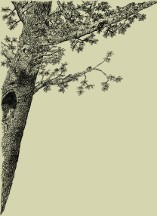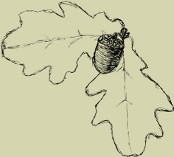42 41 40 39 38 37 36 35 34 33 32 31 30 29 28 27 26 25 24 23 22 21 20 19 18 17 16 15 14 13 12 11 10 9 8 7 6 5 4 3 2 1
Zeszyt 33 (2002)
The study reported in this paper was undertaken to determine the variability of the anatomical parameters of robinia trees, which could be used as indicators of the juvenile period of tree growth. From the annual growth rings the early and late wood were separated and subjected to maceration conducted in a mixture of glacial acetic and 30% of hydrogen peroxide. The measurements were performed using a system for image processing controlled by the program Imager 512
Key words: robinia, fibers, vessel members, growth ring, diameter, length, juvenile and mature wood
The wood density was found to increase with the distance from the pith, irrespective of the biosocial position of a given tree. This increase is the most pronounced in the suppressed trees, and also the wood density of this kind of trees is the highest. Te length of tracheids increases from the pith to a certain distance towards the circumference at which it reaches a maximum, and then gets stabilized.
Key words: Douglas fir, density wood, length of tracheids, biosocial position
The investigated pulps are characterized by different reactivity to hydrogen peroxide both in acidic and alkaline conditions. Residual lignin of pulps with lower kappa number (30 and 16) was considerable degraded in acidic conditions. Acidified hydrogen peroxide solutions caused yet severe degradation of carbohydrates in all the studied pulps. Oxygen delignified pulp (kappa number 16) revealed the smallest differences in yield and selectivity of delignification in dependence of the reaction conditions (acidic/alkaline). The most efficient protection of Mg+2 ions was found for the same pulp in alkaline conditions. Our results show that studies should be continued on the chemistry of hydrogen peroxide treatment of the kraft pulps before as well as after oxygen delignification.
Key words: kraft pine pulp, delignification, hydrogen peroxide
Content of quaternary ammonium salts in saturated pine wood was analyzed. Ammonium salts were extracted from wood using low frequency ultrasounds. Differences in the content of ammonium salts calculated from the absorption by wood and values measured analytically were observed. They resulted from strong surface active properties of cation surfactants.
Key words: quatenary ammonium salts, adsorption, pine wood, ultrasounds, sonolysis, chemical analysis
The aim of the study was to determine the reaction of plants to the wood preservatives and wood treated with preservatives. The study was made comparatively with ten types of organic and water-borne preservatives. The white mustard (Sinapis alba L.) was chosen for use as bioindicator and the tests were carried out to determine the response of plants to preservatives. The following methods of testing were examined:
— direct application of the preservatives to the plant by spraying,
— application of the preservative to the soil substrate,
— plants growing in the vicinity of treated wood,
— seed germination rate.
The phytotoxil concentration of wood preservatives was presented. It is to conclude that the presence of wood preservatives may have sometimes negative effect on the ecosystem.
The dowel corner joint in case furniture in, which pine wood was material of join members, was investigated. The effect of variable dimensions of the joint: the dowel diameter and the depths of dowel embedment in the face and the edge member, on stresses in selected places of the joint and its deformation was determined. The finite element method was applied, assuming the three-dimensional state of stress. The deformation of the joint, which was the angle of the relative rotation of joint members, was also determined experimentally.
Key words: dowel joint, corner joint, case construction, glue line, finite element method, stresses, joint deformation















 Pobierz PDF
Pobierz PDF